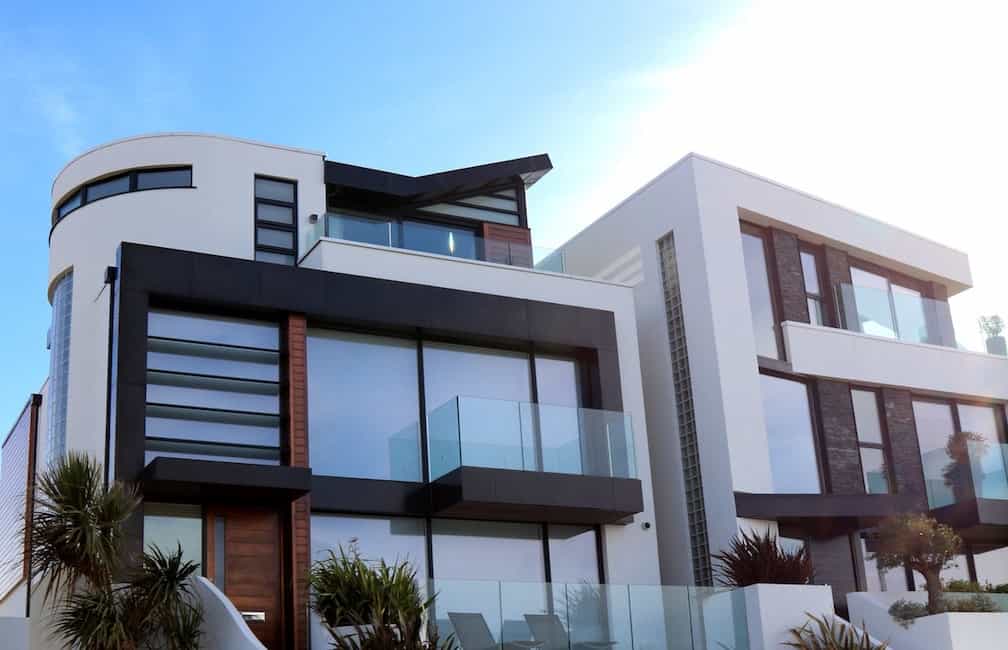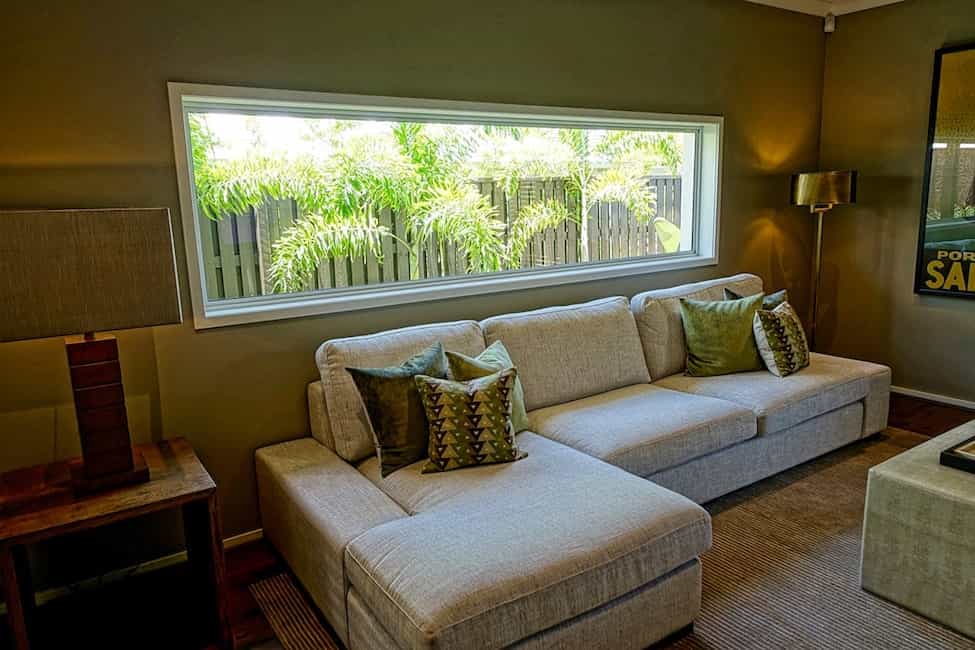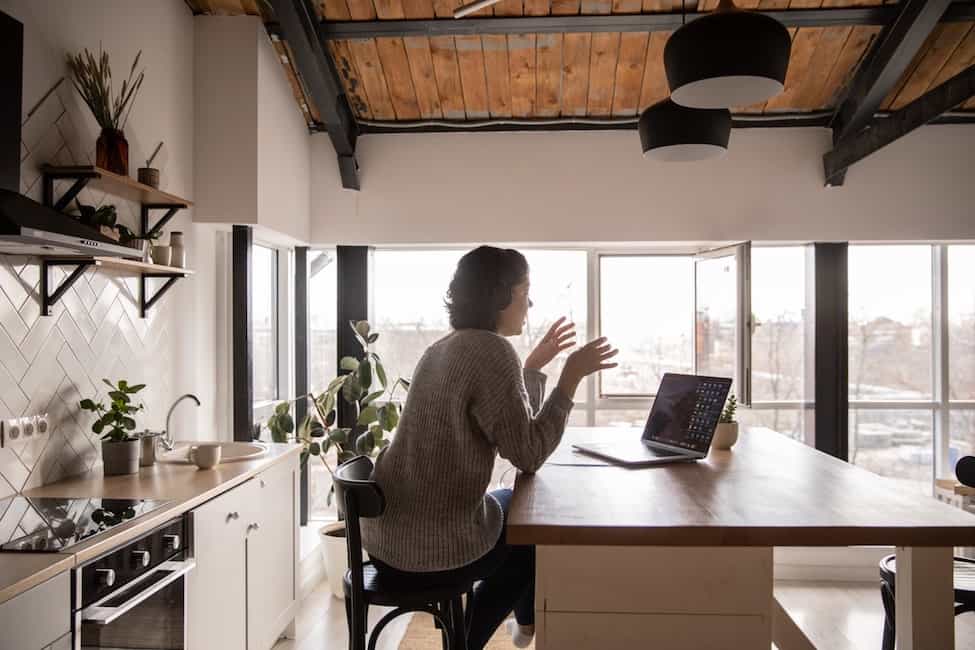Over the years, urbanization has forced families and individuals to thrive in the often-barren urban environment, with concrete walls and glass as homes and offices. Thanks to the emergence of new design solutions, such as the biophilic design that aims to promote well-being, health, and emotional comfort.

The concept of biophilia, which means “bringing outdoor nature inside,” is one of the latest trends that is gradually revolutionizing the fields of architecture, interior design, and real estate. Unlike “green buildings” that aims to reduce the negative environmental impact of materials used and pollutants, biophilic design acts as a bridge between its inhabitants and nature.
Scientific research proves that adding natural elements and models in the human-environment improves general well-being (health) and employee productivity. Read along and discover the meaning, types, and unlimited benefits of biophilic structures.
What is Biophilia?
The term biophilia, derived from the Greek terminologies of ‘philia’ as love and ‘bio’ as nature, refers to “the love of nature or life.” Edward Wilson, a biologist from Harvard, came up with a hypothesis that humans will naturally strive to be close and connected with their natural environment.”
Take a moment and imagine a peaceful, relaxing, and comforting environment. Most people tend to picture scenarios or locations filled with natural features, such as the beach, forest, mountains, or scenes with a breeze, fresh air, soil, among other natural elements. Now, consider these attributes melded with the industrial and technological revolutions that we have now. We will have biophilia and the concept applied to residential homes, steel buildings, and warehouses.
Besides, psychologists report that individuals who stay distanced for long from the natural environment are sure to develop health and well-being problems. For example, most working-class individuals in industrialized towns are at a high risk of developing mental conditions, such as stress and frustration.
On the other hand, workers taking work vacations to beaches and nature-filled destinations tend to relieve stress. Scientific research shows that nature has the power to reduce work stress, depression, and frustration while increasing individual creativity, work-output, concentration, and more. Due to this, investing in biophilic homes and offices is sure to improve the general health and well-being of populations.
What is Biophilic Design?
Biophilic concept refers to the architectural and interior design practice of incorporating natural ecosystems and elements into the built environment. Simply put, it means “bringing the wild outdoor nature indoors.” Property owners, architects, and planners use the design concept to enhance public and private property spaces to be beneficial for the well-being of residents and tenants.
Biophilic homes and offices consider factors that will benefit both the physical and psychological human well-being. According to Oliver Heath’s research on the impact of biophilic office structures to employees, the biophilic design helped improve staff output by eight percent, and an impressive 13% improvement on well-being.
Moreover, biophilic developers aim to bring a balance between the concrete, steel, and glass-urban structures with different characteristics of nature, hence achieving harmony.
Biophilic Concepts in Real Estate
Adopted not too long ago in the construction industry, biophilic design is gradually capturing real estate investors’ interest. The biophilic concept is also fast-revolutionizing the face of architectural, metal building construction, and real estate sectors, creating a win-win solution for property owners and buyers.
Access to the natural environment and design might be considered a luxury by most home buyers and investors. But trends are changing. Some individuals are willing to invest in accessing purified air, relaxing environments, and tranquil spaces. According to research by Oliver Heath Design, guests and tourists are more willing a fee higher by 23% to secure rooms that are naturally structured.
What’s more, incorporating nature in space is closely tied to the principles of “sustainable development,” which are applicable in all human environmental, social, and economic aspects.
Main Features of Biophilic Architecture

When incorporating nature into the construction of metal buildings, variations are likely to develop based on personal interest, budget, space availability, and personal preferences. However, there are several features applied internationally by various interior designers and architects.
These include:
- Using natural and locally available materials, colors, and patterns
- Application of different species of vegetation in either scattered or clustered designs
- A sense of shelter and personal privacy
- Landscape views either indoors or outdoors
- Natural scents
- Bridging and harmonizing the boundaries between indoors and outdoors
- Exploring different light dynamics for both natural and artificial lighting
- Thermal comfort environment
- Space designs focusing on physical and psychological impacts
- Natural and human-made water body proximity
- Acoustic and aesthetic beauty
Principles of Biophilic Structures
The three principals of structures applying biophilic concepts include the following:
1. Adding the idea of nature in home and workspace
The advantage of incorporating natural elements is that they are free, globally available, and flexible when applied. What’s more, one can combine more than two items to achieve indoor and outdoor harmony.
The five natural components
- Water. They can be used in making attractive fountains and waterfalls. Some wide-scale uses include water being used in parks to create public ponds.
- Earth. This is composed of soil and stones. Quartz and rounded rocks can be used when decorating walls and pavements. Huge boulders can be applied to construct demarcating paths and surrounding flowers and hedges. One can also invest in rounded stones and stone sculptures. Different soil colors can be used for decorative artwork that can be fitted in a frame and wall-hanged.
- Air. Fresh air can be achieved by opening office windows and ventilators. The effect of a cold breeze, especially on a hot day or stuffy environment is relaxing.
- Void. Creating free spaces is essential, especially in malls and places that experience large crowds. For example, parks and gardens enable one to capture views of their natural environment. For instance, having large glass walls or windows in offices enhances the vertical aspect and the beautiful top-to-bottom view for buildings in high floors.
- Fire. Having a fireplace at home with a chimney is suitable for warming the house during cold seasons.
Natural materials
One can acquire office and home furniture created from wood. For example, a table or chair curved from a tree stem with branches for support. On the other hand, once can use wood with visible grain for a more wild appeal.
Since wood can be curved, it brings diversity in shaped stationery and furniture from the edgy office appliances. Timber comes in different shades and can be polished for that extra smooth feel hence flexibility in application.
Botanical elements
Different plant species and unique characteristics make it easy to apply natural resources preferred by most interior designers. For example, bamboo and leaf shape, enable designers to choose a perfect plant feature that best suits the home or office structure. Different flower colors and long stems can also be used to apply biophilic design concepts.
Locally available home plants and small live plants on employee desks, close to the window, or balcony play a significant role in enhancing biophilic effect at homes and offices. Some of the commonly used plants include succulents, such as cactus that require little water and maintenance.
Creeping plants can also be planted on walls with scented plants like rosemary and mint emanate natural sweet scents.
Moreover, dried flowers and stems, such as bamboo, can be dyed and used in a wall or placed in a vase to enhance appeal based on the color aspects.
2. The Nature of Space
This principle focuses on applying non-natural materials in reflecting natural surroundings—for example, the use of patterns and shapes resembling nature. These include:
Home decors
These range from wall and floor stickers, seats, tables, desks, curtains, pillows, wall art, and decorations that mimic nature. For example:
Wallpapers and floor stickers
You can access stickers and wallpapers with beautifully printed 3D images of flowers, animals, plants, and scenarios that bring out that realistic natural feel.
3. Natural Analogs
The principle focuses on trying to replicate the natural feelings we experience in a natural environment. For example, Visual analogs focus on the interaction of lights and shadows at the workplace and homes. Examples include:
Natural sunlight
With the sunlight recommended as a source of Vitamin D, offices and homes can invest in translucent green roofs to allow sunlight. Natural lights are also friendly to the eye compared to electric lights from bulbs.
Types of windows also play a significant role in terms of visual aspects. By frequently opening windows or structures with huge windows, natural light can easily be accessed by inhabitants.
On the other hand, the aspect of light interacting with shadows plays a significant biophilic effect. For example, the formation of shadows can tell one more about time, create calming shapes, and shades for a calming and attractive visual effect.
Benefits of Biophilic Designs

Foster strong mental health.
According to the World Health Organization (WHO), stress and mental illness are high in urbanized areas with minimal access to nature. On the other hand, a report by a United Kingdom psychological firm “Mind” states that exposing people to natural stimuli in homes and offices enhance positive thinking. It also indicates that a relaxing environment reduces and prevents stress and depression. Additionally, individuals with access to nature develop higher self esteems and are much happier.
High Retail Value
Homes and estates in the environment with natural landscaping and vegetation tend to attract more buyers; hence, they command a higher rental price. Additionally, most buyers are willing to pay more top rental and purchase fees of 8% to 12% to access the biophilic building for offices and homes.
Improvement in Staff Productivity
In 2003, a study of call centers in Sacramento showed increased phone calls of up to 12% by workers with access to nature views. Additionally, free spaces and partitioned offices with zones for socializing enable staff to relieve the working pressure. Spacious working space enables employees to personalize their personal space with desk plants and other equipment that enhance output.
Reduced Cases of Office-related Illnesses
According to a study by the U.S. Joint Commission, office plants help purify the air by absorbing toxic pollutants, such as benzene, mainly produced by painted office walls and new furniture. Due to this, office plants reduce the rate of staff developing airborne irritations, allergies, and infections by 40%.
Affordable and Effective Office Planning
With most nature-focused design being cost-effective, management reported huge savings while ensuring that staff enjoys comfortable and productive working conditions. Some data prove that incorporating natural components in an office space helps companies save around $2,000 per workforce.
Improved Concentration and Creativity
Schools and learning institutions surrounded by gardens and arboretums have produced some of the creative students. They use the natural environment to come up with innovative and art inspired educational results.
Improved Patience Recovery
Hospitals that embrace biophilic design can provide a calming and comforting environment for both the physical and psychological healing of their patients. Such hospitals have even recorded high rates of patient attendance for medical checkups.
Higher Staff Retention
According to a study by Peldon Rose, firms that invest in the biophilic workspace have recorded an impressive 53% of the rate of staff retention, with higher retention specially registered among millennials.
Good Company Branding
For firms to make a strong market appeal and earn loyalty from their employees, they have to live up to their goals, principles, and products. Some of the top international brands that incorporate nature in their workspace and foster successes include:
- Amazon’s cloud forest offices located in Seattle that was worth $4 billion.
- Singapore’s “Khoo Teck Puat Hospital” designed in a rain forest architecture
- The “One Central Park” in Sydney that sets record as the world’s tallest vertical garden
Conclusion
To sum, biophilia’s concept explores the numerous benefits that nature can give on both homes and workspaces. The benefits range from reducing stress, enhancing the home and building aesthetics, improved productivity, to enriching the company branding, among others.
In the real estate business, investing in natural space, materials, and analogs is considered a luxury highly demanded by investors and buyers. One should focus on the three primary biophilic principles of nature: space, nature of space, and natural analogs.
Article originally published by ArchDaily.com



